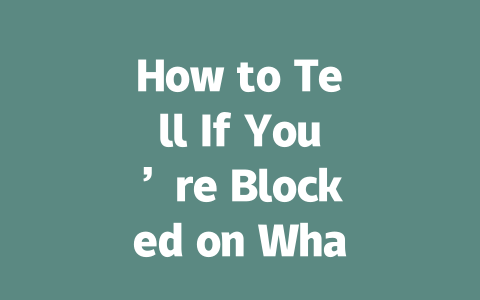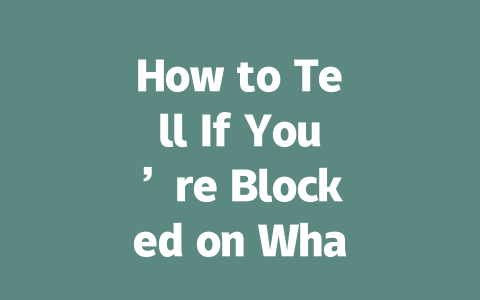You’ve probably experienced this before: you want to stay informed about the latest news, but every time you open your phone or laptop, it feels like there’s just too much happening. The notifications never stop, and suddenly you’re drowning in articles that don’t even matter to you. So how do you keep up with what matters without feeling overwhelmed?
Let me share a method I’ve personally tested over the past year. It’s not perfect, but it works—and best of all, it doesn’t require hours of scrolling through social media feeds. Here’s my approach:
Step 1: Identify Your Priorities—What Do You Actually Care About?
Before diving into any strategy for staying updated, take a step back and ask yourself: what kind of news am I really interested in? Is it global politics, tech innovations, health trends, entertainment gossip, or maybe local events in your city? Narrowing down your focus will help filter out unnecessary noise.
For example, last year, one of my friends was trying to follow everything under the sun—from cryptocurrency updates to celebrity scandals. He quickly burned out because he didn’t have a clear idea of what truly mattered to him. Once we sat down together and figured out his priorities (which were business and environmental news), he set up systems to focus only on those areas. Within weeks, he felt less stressed and more productive.
Why does prioritization matter?
Because when Google’s search robots scan content, they look at relevance first. If you bombard yourself with irrelevant information, it’s like filling your brain with low-quality data. Instead, think about specific keywords related to your interests—for instance, “latest breakthroughs in renewable energy” instead of just “environmental news.” This way, you ensure the info you consume aligns closely with your goals.
Step 2: Choose Reliable Sources That Align With Your Interests
Now that you know what you care about, where should you get your news from? Not all sources are created equal. Some prioritize sensationalism over accuracy, while others offer balanced, well-researched reports.
Here’s what I suggest:
|
| Topic | Recommended Source | Why It’s Trustworthy |
|---|---|---|
| Technology | TechCrunch | In-depth analysis of startups and emerging tech. |
| World News | BBC News | Known for impartiality and extensive coverage. |
| Health Trends | Mayo Clinic | Backed by medical professionals and research. |
This table isn’t exhaustive, but it gives you an idea of how to match reliable sources with your needs.
Step 3: Set Up Smart Alerts Using Tools Like Google Alerts
Once you’ve identified your favorite sources, let technology do some of the heavy lifting for you. One tool I love using is Google Alerts. You can create custom alerts based on keywords relevant to your interests. For example, if you’re passionate about artificial intelligence, set up an alert for phrases like “AI advancements 2025” or “new AI applications.”
Tips for setting effective alerts:
Google Alerts helps because its algorithms use natural language processing to understand the content meaning of each article. When you set up smart filters, you’re telling the system exactly what types of stories you want to see.
Step 4: Curate Your Social Media Feeds Wisely
Social media is both a blessing and a curse when it comes to staying updated. While platforms like Twitter and LinkedIn can provide real-time insights, they also come with distractions. Here’s how to balance it:
I recently tried curating my own LinkedIn feed for professional development. By unfollowing irrelevant connections and adding key figures in marketing, I noticed a significant improvement in the quality of content I consumed daily.
Final Thoughts Before We Wrap Up
Remember, staying informed doesn’t mean consuming every piece of news available. Focus on what adds value to your life and career. Write down actionable steps to implement what we discussed today, such as identifying your top three interests, choosing two trusted sources per interest, and setting up Google Alerts.
If you give this plan a try, drop me a line—I’d love to hear how it goes for you! Or if there’s something else you struggle with regarding staying current with the latest news, feel free to reach out anytime.
If someone decides to block you on WhatsApp, it’s important to understand how this affects your communication. For starters, once blocked, any new messages you try to send won’t reach the person. They won’t get a notification, and you won’t see any delivery or read receipts. However, there’s a catch—messages sent before the block might still be lingering in their inbox, unread. This means that even though they’ve cut off future communication, those last few words from you could still be sitting there waiting for them to process. It’s like sending a letter that never gets delivered but might already be in their mailbox.
When it comes to noticing if you’ve been blocked, WhatsApp doesn’t exactly shout it out. Instead, you’ll start picking up subtle clues. For example, the “last seen” status will disappear, profile pictures won’t load, and your messages will only show one tick instead of progressing further. Sometimes, these signs don’t pop up right away; it might take 5-12 minutes for your device’s cached data to update. That said, unblocking someone is just as quiet a process. If you decide to undo the block, the other person can jump back into communicating with you without ever knowing they were blocked in the first place. There’s no alert notifying them about the change. As for third-party apps claiming to detect block statuses? Well, they’re not officially backed by WhatsApp, so trusting them might leave you more confused than informed. Stick to what the app itself tells you—it’s usually reliable enough.
# Frequently Asked Questions (FAQ)
#
Can I still receive messages if someone blocks me on WhatsApp?
If someone blocks you on WhatsApp, you won’t be able to send them new messages. However, they may still receive unread messages sent before being blocked. Any future attempts to message them will fail silently, meaning you won’t receive a delivery or read receipt.
#
Will I know if someone blocks me immediately?
No, WhatsApp does not notify users when they are blocked. Instead, you’ll notice changes in behavior, such as missing last-seen updates, profile pictures no longer loading, and messages failing to deliver after showing one tick.
#
How long does it take for WhatsApp to update block status?
The blocking process happens instantly once the other person initiates it. There is no delay in applying the block; however, recognizing the signs might require waiting 5-12 minutes for cached data on your device to refresh.
#
Can I unblock someone without them knowing?
Yes, you can unblock someone on WhatsApp without sending them a notification. They will regain access to interact with you, but they won’t receive an alert informing them that they were previously blocked.
#
Is there any third-party app to check if I’m blocked on WhatsApp?
While some apps claim to detect blocking statuses, they aren’t officially supported by WhatsApp and often lack accuracy. It’s best to rely on native features and behavioral cues within the app itself.




